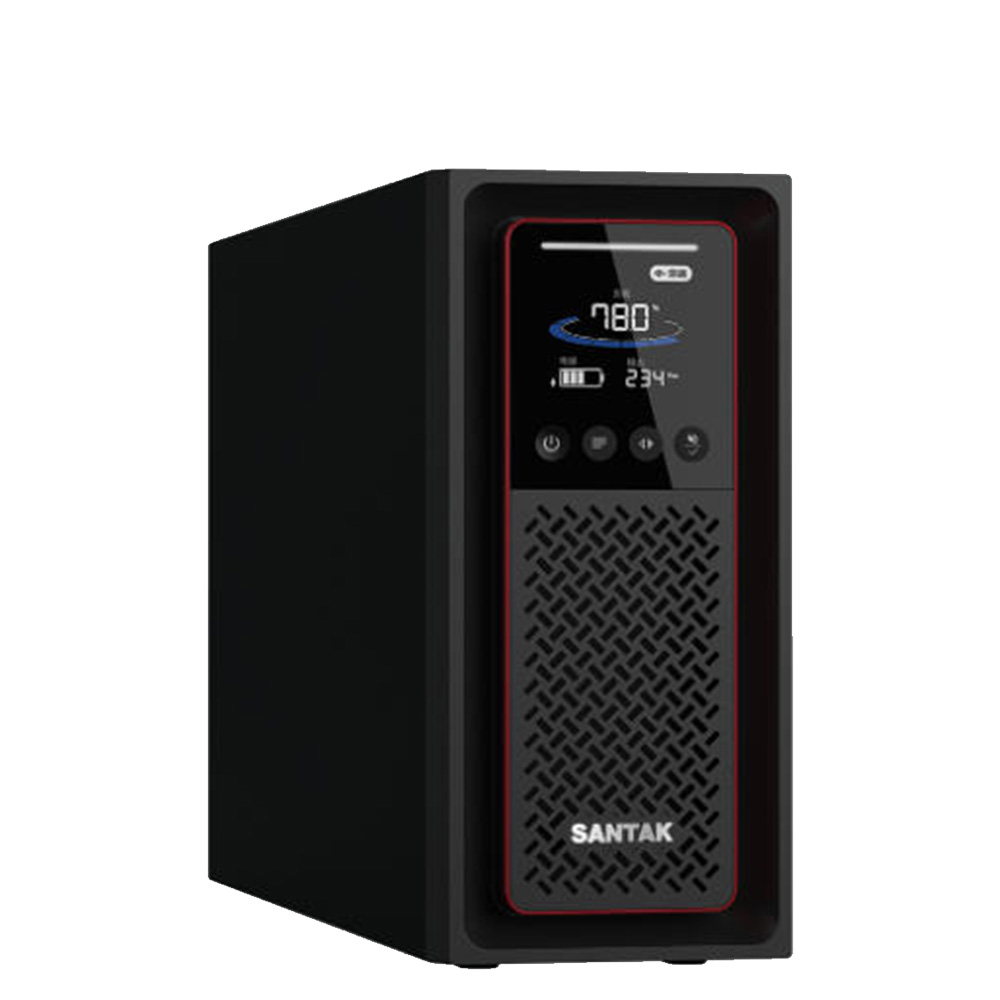Precautions for installation and use of Santak UPS power supply
1. Connection method and precautions for Santak UPS power supply
The input socket of the Santak UPS power supply should be connected to the mains power, and the output socket can be connected to the computer and monitor through a terminal block. For the Santak UPS power supply, its output power is divided into two parts: one is a voltage regulator and battery output, used to connect to the computer host; The other part is the voltage stabilization output, which is used to connect displays, printers, and other devices in areas with unstable voltage.
Attention: Machines with a power supply of C3K or below from Santak UPS are not allowed to be connected to printer devices through output sockets and voltage regulator and battery output sockets. UPS power outputs are also not allowed to be connected to drills, hammers, and fans. The power output socket of UPS cannot be directly connected to the input socket. The load capacity of UPS power supply cannot exceed 80% of its calibrated load capacity. Machines larger than the C3K of the Santak UPS power supply can be used, but the load cannot exceed 80% of the UPS power supply’s power
2. The function of the internal battery in the Santak UPS power supply host
There is a set of batteries inside the UPS power host, which is used to provide power for its internal control. If this battery is depleted, it will cause the host to start abnormally, such as relays not being able to close, output sockets not being powered, etc.
3. Normal indication status of Santak UPS power supply
The corresponding relationship and symbolic meaning of the indicator lights are described as follows:
(1) The mains power is connected, and when the UPS power supply is not turned on, the green 1 [mains power] and load/power 5 lights are on. The green light 1 is on, indicating that there is mains power input. The yellow 2 indicator light should have been a bypass indicator light, which means that the mains power supplies power directly to the equipment through the bypass without going through a voltage stabilization process. However, the two UPS power supplies we currently use do not have bypass function, so the yellow 2 indicator light is meaningless.
(2) Power on: Press the ON switch button. At the moment of power on, green 1, yellow 2, load/battery and fault indicator lights will light up simultaneously. Then, the load/battery and fault indicator lights will turn off one by one from bottom to top, and the load/battery 5 lights will light up again; After about 3 seconds, the yellow 2 lights will turn off, the green 2 [inverter] light will turn on, the output socket will supply power, and the UPS power supply will enter the normal power supply state. At this time, the load/battery light indicates the load capacity of the load, and the maximum load capacity should be maintained with the load/battery 1 light not on.
(3) Battery power supply status when there is no mains power supply:
When the mains power is cut off, the green light goes out, indicating no mains power, and the yellow light is on, indicating battery power supply. At this time, the load/battery light indicates the current capacity of the battery and emits an alarm sound. When the battery capacity is sufficient, the interval between alarm sounds is longer and the load/battery light is much brighter; When the battery capacity is insufficient, the interval between alarm sounds is shortened and the load/battery light is less on; When load/battery 1 lights up, it indicates that the battery has less than 25% energy left. At this time, the alarm sound is very urgent, indicating that power cannot continue and other measures should be taken.


